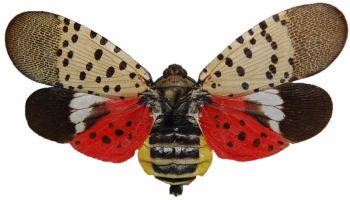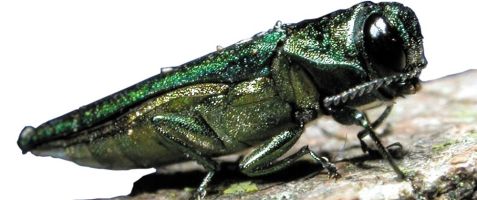Will Insurance Pay for Hazardous Tree Removal in Wilmington, DE?
We all love our trees. From branching maples and red oaks to colorful dogwoods, trees provide myriad benefits and improve the look and feel of a property. However, even the hardiest tree can fall victim to disease and old age, and what once was a beautiful addition to your property may now be a hazardous object. If you have a dead, dying, or dangerously placed tree, you may be wondering about hazardous tree removal in Wilmington, DE, and whether your homeowner’s insurance will pay for the service.
Insurance Guidelines for Tree Removal in Wilmington, DE
As Delaware and Pennsylvania residents and property owners prepare for winter storms, where vulnerable trees could fall, the worry about those trees may be in the forefront of their minds. In general, most homeowners insurance companies are unwilling to pay to have a dead or dying tree removed from a property unless the tree has already fallen and caused damage. Even then, they may only pay for part of the costs.
Why You Should Avoid Waiting
Homeowners should avoid waiting for nature to take its course with hazardous trees. Waiting for dangerous trees to fall on their own may save you some removal costs, but waiting is a dangerous game as a falling tree can seriously injure people and pets or cause massive, expensive damage to property that can take a long time to repair. Injuries due to a lack of tree maintenance are worrisome, as you are likely to become legally liable if a tree injures a neighbor or damages their property.
For example, if a homeowner has a tree with an overhanging branch that has been dead for years, but the homeowner has neglected to remove it despite complaints from neighbors, and that branch falls onto the neighbor’s property or injures them, the homeowner can be held liable.
These liabilities and legal disputes can cost people thousands of dollars, even tens of thousands of dollars, depending on the damage, while the damage itself could have been prevented with proper tree care.

Therefore, the best advice for Wilmington and surrounding Delaware residents is to have any suspicious-looking trees properly inspected by a certified arborist as soon as possible. Tree trimming and the removal of dangerous trees are considered by insurance policies to be a part of routine homeowner maintenance. In some cases, our team may be able to trim back or prune away parts of a diseased or overgrown tree to reduce the risk of harm to people or property. In cases where emergency tree removal in Wilmington, DE, is necessary, Stein Tree Service is available 24/7 and responds quickly.
What Constitutes a Hazardous Tree?
A hazardous tree for property owners is one that is likely to fall or shed branches, causing damage to property or people. This can be due to a number of factors, including:
- Dead or diseased trees: Dead and diseased trees are likelier to fall or shed branches than healthy trees.
- Trees with structural defects: Trees with structural defects, such as cracks in the trunk or limbs or rot in the roots, are also more likely to fail.
- Trees that have been damaged by storms or other events: Trees that have been damaged by storms, fires, or other events may be more likely to fall or drop branches.
- Trees that are leaning or growing too close to buildings, power lines, or other structures: Trees that are leaning or growing too close to buildings, power lines, or other structures pose a hazard and can cause damage.
Here are some specific signs that a tree may be hazardous:
- Dead or diseased branches
- Cracks in the trunk or limbs
- Rot in the roots
- Leaning trunk
- Tree growing too close to buildings, power lines, or other structures
- The tree has been damaged by storms or other events
While these signs are generally what hazardous trees display, each tree and environment is unique. What constitutes a hazard will vary depending on the specific tree and its surroundings. For example, a tree that is healthy and structurally sound may still pose a hazard if that tree is growing too close to a house.
Understanding the Risks of a Hazardous Tree
Understanding the risks associated with hazardous trees is crucial for proper tree care and safety on both public and private property. These risks can arise from factors such as unstable tree limbs, fire damage, storm damage, or even tree death due to disease or old age.
Falling tree limbs can pose a range of potential dangers. First, there is the risk of injury or even death to individuals nearby. A falling tree limb can cause severe trauma and even fatalities if branches land on a person. Additionally, falling tree limbs can cause damage to vehicles, structures, and other personal property, resulting in costly repairs or replacements.
Regarding public safety, falling tree limbs can create hazardous conditions. Tree limbs can obstruct roads and sidewalks, potentially causing accidents for pedestrians and road users. In addition, falling tree limbs can also damage power lines, leading to power outages and posing a significant risk of electrical fires.
For property owners adjacent to trees, there is a constant risk of falling tree limbs. Strong winds and storms can weaken tree branches, making them more prone to falling. This can threaten the safety of persons and their personal property, including structures, vehicles, and outdoor amenities.
Why You Should Avoid Waiting
Homeowners should avoid waiting for nature to take its course with hazardous trees. Waiting for dangerous trees to fall on their own may save you some removal costs, but waiting is a dangerous game as a falling tree can seriously injure people and pets or cause massive, expensive damage to property that can take a long time to repair. Injuries due to a lack of tree maintenance are worrisome, as you are likely to become legally liable if a tree injures a neighbor or damages their property.
For example, if a homeowner has a tree with an overhanging branch that has been dead for years, but the homeowner has neglected to remove it despite complaints from neighbors, and that branch falls onto the neighbor’s property or injures them, the homeowner can be held liable.
These liabilities and legal disputes can cost people thousands of dollars, even tens of thousands of dollars, depending on the damage, while the damage itself could have been prevented with proper tree care.
Contact Stein Tree Service for Emergency Tree Removal in Wilmington, DE
Diseased and dying trees can have catastrophic impacts should they fall on your property. If you are unsure about the health and well-being of any tree on your property, contact us for an inspection by a certified arborist. Our team is skilled in various tree care services, from the mitigation of hazardous trees via bracing or pruning to the complete removal of dead or dying plant life via tree removal and stump grinding. Our hazardous tree removal services could save you thousands in the event of a need for emergency tree removal.



